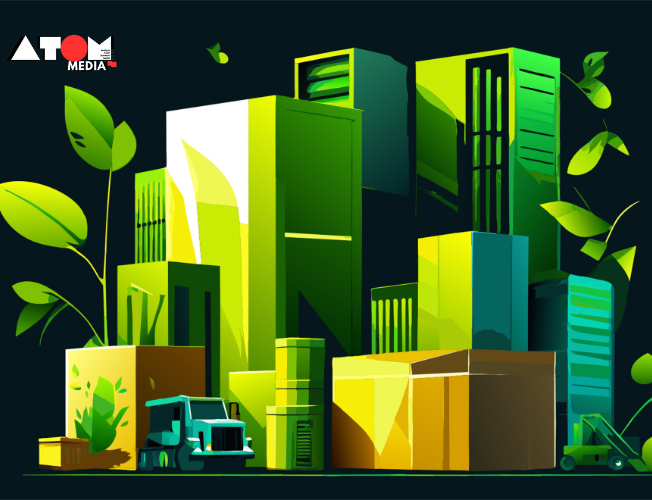The construction industry is undergoing a significant transformation as green buildings emerge as the cornerstone of sustainable development. As concerns about climate change intensify, green buildings, designed to reduce environmental impact and improve occupant health, are becoming more critical in promoting eco-friendly practices. From energy efficiency to resource conservation, these sustainable structures are playing an essential role in mitigating climate change, conserving natural resources, and providing healthier living spaces.
With advancements in technology, the evolution of green buildings has accelerated, offering innovative solutions for energy conservation, water efficiency, and the use of sustainable materials. Today, green buildings are a key part of global efforts to reduce greenhouse gas emissions and create a more sustainable future.
The Origins of Green Building Practices
The concept of green building practices dates back to the 1960s with the introduction of ecological architecture. However, it was the energy crisis of the 1970s that spurred the construction industry to focus on renewable energy sources and energy-efficient buildings. The 1980s saw the emergence of the “sustainable development” paradigm, which led to the widespread implementation of energy-saving systems in buildings.
The introduction of the world’s first green building standard in the UK in 1990 marked a significant milestone in the green building movement. This was soon followed by the formation of the U.S. Green Building Council (USGBC) in 1993. In India, the CII-Sohrabji Godrej Green Business Center in Hyderabad became the first building outside the U.S. to achieve a LEED Platinum rating, highlighting the country’s growing commitment to sustainable construction.
Energy Efficiency: A Key Component
Energy efficiency is a fundamental aspect of green buildings, and technological advancements have played a pivotal role in enhancing this feature. High-performance insulation, energy-efficient windows, and state-of-the-art HVAC systems have become essential components of green buildings. These technologies help reduce energy consumption, minimize heat loss, and ensure optimal indoor climate control.
Moreover, the integration of renewable energy sources such as solar and wind power allows green buildings to generate clean energy. Smart building technologies, including sensors and automation, optimize energy use by analyzing occupancy patterns and adjusting lighting, heating, and cooling systems accordingly.
India’s Energy Conservation Building Code (ECBC) has been instrumental in setting energy efficiency standards for new commercial buildings. This initiative has led to substantial energy savings and is a key contributor to India’s ambitious goal of achieving net-zero carbon emissions by 2070. The government’s renewable energy targets and the development of smart grids further support the integration of clean energy into green buildings.
Water Conservation: A Vital Sustainability Practice
Water conservation is another critical feature of green buildings. Efficient plumbing fixtures, rainwater harvesting systems, and greywater recycling are employed to minimize water consumption. Additionally, smart irrigation systems optimize water usage by adjusting watering schedules based on weather conditions and soil moisture levels. Water-efficient appliances and drought-resistant landscaping contribute to further water savings, benefiting both the environment and building owners by reducing operational costs.
India, a country facing declining per capita water availability due to population growth and climate change, has implemented several water conservation initiatives. The National Water Policy emphasizes efficient water use, rainwater harvesting, and the management of groundwater resources. Government programs such as Jal Shakti Abhiyan, Har Ghar Jal Yojana, and Jal Jeevan Mission aim to provide safe drinking water to rural households while improving overall water quality.
Sustainable Materials: Reducing Resource Consumption and Waste
The use of sustainable materials in construction is gaining momentum as developers look for ways to reduce resource consumption and minimize waste. Innovative materials such as cardboard panels, chipboard panels, and Aerocon panels are repurposing existing resources to reduce the carbon footprint of building projects. These materials offer rapid on-site assembly, enhance efficiency, and lower construction costs.
In India, the certification of green building materials has been introduced to encourage the use of sustainable resources in construction. Additionally, government incentives such as tax benefits and subsidies are promoting the adoption of these materials. Research institutions and universities across India are also actively engaged in developing new sustainable materials for the construction industry.
The Role of Building Information Modeling (BIM)
Building Information Modeling (BIM) is revolutionizing the construction industry by enhancing the sustainability of green building projects. BIM provides a collaborative platform for architects, engineers, and construction professionals to plan, design, and manage building projects more efficiently. By creating a digital representation of a building, BIM optimizes resource management, reduces waste, and improves overall project efficiency.
In India, BIM is being widely adopted for government projects, including infrastructure development and smart city initiatives. The National Highways Authority of India (NHAI) has developed a BIM Toolkit to guide the implementation of BIM in highway projects. Furthermore, the Bureau of Indian Standards (BIS) has published several BIM standards to promote its adoption in the Indian construction industry.
While there is no nationwide mandate for BIM implementation in India, strong government initiatives and recommendations are driving its adoption. The growing trend towards BIM reflects its potential to improve efficiency, reduce costs, and enhance sustainability in construction projects.
Market Growth and Regulatory Support
India’s green building market is set to experience significant growth in the coming years. By 2025, the market is projected to contribute $39 billion, with the commercial segment generating $11 billion and the residential segment contributing $28 billion. The increasing emphasis on sustainable construction is reflected in the growing share of green buildings in new developments.
Government regulations, such as the Energy Conservation Building Code (ECBC) and the Green Rating for Integrated Habitat Assessment (GRIHA), play a crucial role in promoting sustainability in construction. Additionally, certification systems such as LEED (Leadership in Energy and Environmental Design) and the Green Business Certification Inc. (GBCI) ensure that green buildings adhere to global sustainability standards.
Incentives such as tax benefits, low-interest loans, and fast-track approvals are being offered to green building projects, making sustainability financially viable for developers and encouraging private sector investment in eco-friendly construction practices.
Global Commitments and the Future of Green Buildings
At the COP28 summit, global leaders emphasized the importance of sustainable initiatives by committing to triple renewable energy capacity and double energy efficiency improvements by 2030. India’s commitment to achieving net-zero carbon emissions by 2070 further underscores the critical role of green buildings in the country’s sustainability efforts.
The future of green buildings looks promising, with increasing awareness of environmental issues and growing regulatory support. Enhanced building codes and sustainability standards are set to encourage developers to adopt more eco-friendly practices. By reducing carbon footprints, conserving natural resources, and promoting healthier living environments, green buildings will continue to drive the construction industry towards a more sustainable future.
Read more: Marketing News, Advertising News, PR and Finance News, Digital News





